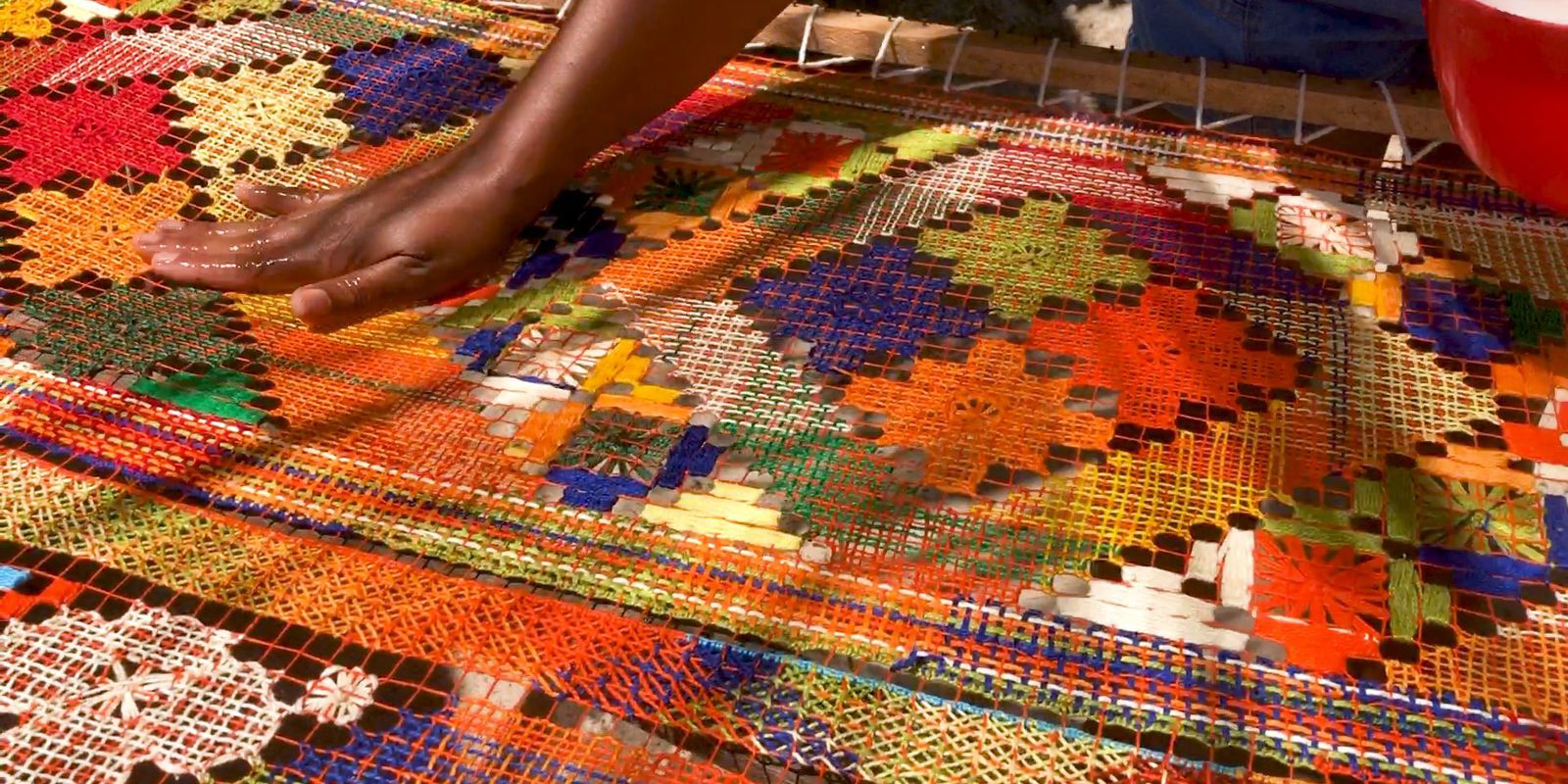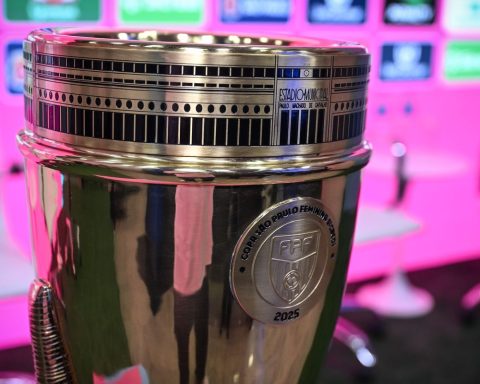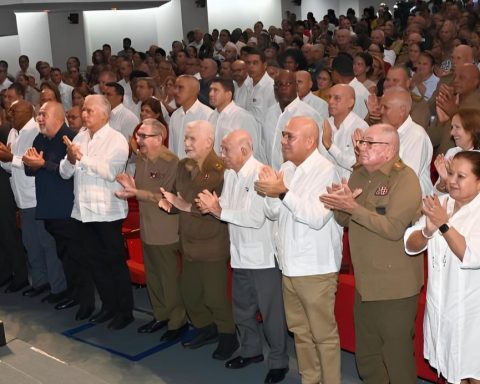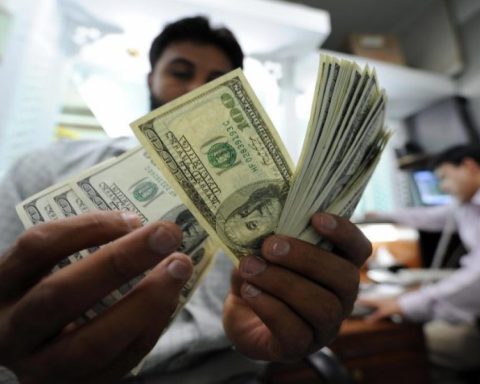Selling to tourists is one of the main sources of income for the artisans who make fillet embroidery in the Lagoas Mundaú and Manguaba Region, in Alagoas. But in order to have more visibility and resources, they want to reach new markets and increase the value of the pieces.
Fillet embroidery is an embroidery technique of European origin spread from generation to generation in the region. Embroidery is constructed from a network called mesh, with small spacing, which serves as a support. The variety of stitches and the complexity of executing the stitches together, in addition to the intense coloring, give the embroidery in this territory unique characteristics from others executed with the same technique.
When they saw their products threatened by competition from fillet embroidery that arrived at craft fairs from other states, made with cheaper and less durable material, the embroiderers from Alagoas understood that they needed to unite, says artisan Petrúcia Lopes. “They were no longer making our original fillet with different stitches, like the grandmothers did, to make this fillet that came from abroad and sold to tourists”, she explains.
With the assistance of the Brazilian Micro and Small Business Support Service (Sebrae), different filezeira associations operating in Maceió, Marechal Deodoro, Pilar, Satuba, Santa Luzia do Norte and Coqueiro Seco came together to create the Filet Embroidery Institute Region of Mundaú and Manguaba Lagoons, the Inbordal.
Organized, they managed to register fillet embroidery as Cultural and Intangible Heritage of Alagoas in 2014. Two years later, they celebrated the recognition of the region as a Geographical Indication (GI) by the National Institute of Industrial Property (INPI) in the Indication of Origin modality for fillet embroidery .
The Inbordal is the regulating body of fillet embroidery. Craftswomen who live in the region and wish to use the IG seal on their pieces must apply to the entity. To obtain the seal, the product must be made in accordance with the Fillet Embroidery Instruction Booklet, which was prepared by the embroiderers.
The mesh must be spaced no more than 1.5cm apart, the thread must be cotton and a variety of traditional stitches must be used in the work, although new stitches are also acceptable. “The product goes through a Regulatory Council made up of three artisans from the institute elected by the associates”, explains Petrúcia, who is vice-president of Inbordal.
Fur inbordal websitethe buyer can track the fillet embroidery by entering the code on the label.
According to Maylda Cristina Soares da Silva, president of the institute, before the Geographical Indication, each group worked in a different way. “We had no idea of price or value, we only knew that we embroidered, sold and earned change. With Sebrae’s consultancy, we learned everything: serving the public, price list and we learned to value our work”, she concludes.
Inbordal receives orders and distributes the demand among its associates. When a woman takes embroidery home, she shares the task with the embroiderers in the family and everyone wins. “We did a whole lot of work to bring in new customers, which meant that we had demand from several states: São Paulo, Rio de Janeiro, Mato Grosso. We also take orders for the United States,” says Petrúcia.
The architect and Sebrae consultant Marta Melo says that the handicraft market is still incipient in Brazil. For her, there is a lack of recognition of the artistic value of manual work. “As the Brazilian consumer is still not used to Geographical Indication in handicrafts and as the offer is very large, they [as artesãs] have difficulties in market positioning. So we went looking for more exclusive markets, like some brands, to form partnerships,” adds Marta.
Stores in Trancoso, Bahia, and São Miguel dos Milagres, Alagoas, have given visibility to fillet embroidery, as well as the partnership with the handbag brand Mog, created by Bahian friends Lívia Novaes and Ana Paula Maciel Rocha, with the aim of give prestige to handcrafted Brazilian art.
The members mapped the arts from Alagoas and identified themselves with the quality and safety passed on by the artisans at Inbordal. They apply fillet embroidery to the decoration of the bags “with the concept of classic, elegant and timeless”, says Lívia.
The company produced 200 pieces for export and is currently focusing on the domestic market through direct contacts and sales on social networks. Another example of success pointed out by Inbordal was Cantão’s 2014 summer collection, which used fillet embroidery on clothes, accessories and shoes.
The efforts of the artisans have paid off. Three filezeiras were selected in the 5th Top 100 Handicraft Award by Sebrae, which is the main acknowledgment of those who make handicraft products in the country. Jurors evaluate technical, aesthetic, symbolic quality, innovation, working conditions, production organization, socio-environmental commitment, commercial experience and adaptation strategies. The proposal is to encourage the improvement of Brazilian crafts.
tourist route
To give more notoriety to the work, they propose the creation of the Tourist Route of Embroidery Filet in the Region of Lagoas Mundaú and Manguaba, following the example of the Wine Route, in Vale dos Vinhedos, in Rio Grande do Sul, and the Cheese Route, in Serra da Canastra, in Minas Gerais. The route would include natural, gastronomic and historical attractions of the environment in which the filet tradition is inserted.
In the proposal presented by Inbordal to the state government and the city halls of Maceió, Marechal Deodoro and Coqueiro Seco, the artisans advocate the creation of a filet museum and holding embroidery workshops, as well as tours of the mangrove islands, bathing in bica and of sea. Visits to churches, sanctuaries and houses reminiscent of the colonization period would be part of the cultural attractions. Water sports, such as artisanal fishing, canoeing, sailing championships may appeal to more adventurous tourists. And the gastronomy, with tasting of shrimp, fish dishes and seafood dishes, completes the experience.
Tourists would get a passport issued by Inbordal. “It would be recognition of our work”, argues Maylda. “Our goal is to expand embroidery in the region of the lagoons throughout Brazil and the world”, projected the president.


















